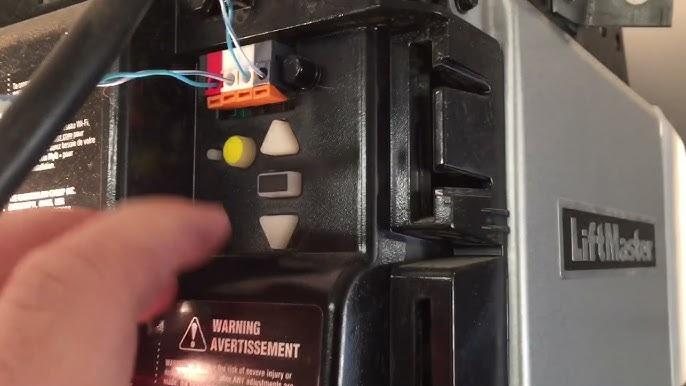In the realm of home automation, the Liftmaster Garage Door Opener stands out as a pinnacle of convenience and security. One key aspect that homeowners often overlook is the importance of properly adjusting the Liftmaster Garage Door Opener adjust up and down. In this comprehensive guide, we will delve into the intricacies of the adjustment process, ensuring that you can optimize the performance of your garage door opener effortlessly.

Understanding the Liftmaster Garage Door Opener
Before we embark on the journey of adjustment, let’s familiarize ourselves with the Liftmaster Garage Door Opener. Known for its reliability and cutting-edge technology, this opener is designed to make your life more convenient and secure. Whether you’re arriving home after a long day or ensuring the safety of your belongings, the Liftmaster Garage Door Opener is a trusted companion.
The Importance of Adjustment
Properly adjusting your Liftmaster Garage Door Opener is crucial for seamless operation and longevity. If the opener is not calibrated correctly, it can lead to issues such as excessive noise, uneven movement, or even premature wear and tear. The adjustment process involves fine-tuning the settings to ensure that your garage door moves smoothly and efficiently, both upwards and downwards.
Steps to Adjusting Your Liftmaster Garage Door Opener Up and Down
1. Accessing the Settings Menu
Begin by locating the settings menu on your Liftmaster Garage Door Opener. This is typically accessible through the control panel or a connected app. Once you’ve accessed the settings, navigate to the adjustment section.
2. Adjusting Upward Movement
In the adjustment menu, you’ll find specific options for upward and downward movement. Start with the upward movement adjustment. Use the provided controls to increase or decrease the force applied when the door moves up. Finding the right balance is essential to prevent unnecessary strain on the opener.
3. Fine-Tuning Downward Movement
Next, focus on the downward movement adjustment. Similar to the upward adjustment, you can control the force exerted during the door’s descent. It’s crucial to strike a balance to ensure a controlled and smooth closing motion.
Common Issues and Solutions
1. Excessive Noise During Operation
If your Liftmaster Garage Door Opener is generating excessive noise during operation, it might be a sign of misalignment or inadequate adjustment. Revisit the adjustment settings and ensure that the force settings for both upward and downward movements are within the recommended range.
2. Uneven Movement of the Garage Door
Uneven movement can be a result of imbalanced force settings. Regularly check and adjust the force settings to maintain a consistent and smooth operation.
The Role of Regular Maintenance
Adjusting your Liftmaster Garage Door Opener is not a one-time task. Regular maintenance is essential to ensure that your opener continues to perform optimally. Schedule periodic checks of the force settings and lubricate moving parts to prevent friction and wear.
Conclusion
In conclusion, mastering the art of Liftmaster Garage Door Opener adjust, both up and down, is key to unlocking the full potential of this sophisticated home automation device. By understanding the intricacies of the adjustment process and addressing common issues, you can enjoy a seamlessly operating garage door for years to come. Remember, a well-adjusted opener not only enhances convenience but also contributes to the overall safety and security of your home. Take the time to fine-tune your Liftmaster Garage Door Opener, and experience the difference it makes in your daily life.



Leave a Reply